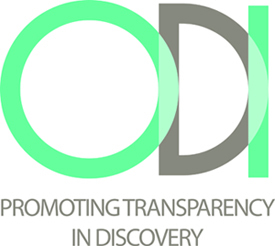Working Group Connection, September 2023: Projects via Information Discovery & Interchange Topic Committee
Co-chairs of the IDI topic committee are: Robert Boissy (Springer Nature) and Jan Waterhouse (Kansas State University).
Access & License Indicators Revision
Working Group Web Page
Publication: NISO RP-22-2021, Access & License Indicators (2021 Revision)
The Access License and Indicators (ALI) Recommended Practice was first published by NISO in 2015 with the goal to standardize and communicate bibliographic metadata that describe the access rights status of journal articles and their license details. The specification gained adoption and use via the ANSI/NISO JATS vocabulary and the Crossref metadata schema.
This 2021 revision extended the RP to add metadata and indicators that would allow metadata users, such as content platforms, to filter or target subsets of license information. This filtering or sub-setting would enable applications to determine whether their users can share a specific journal article version – or elements thereof – under specific contexts (e.g., sharing in researcher collaboration groups or on public profiles).
Communication of Retractions, Removals, and Expressions of Concern (CREC)
Co-chairs: Caitlin Bakker (University of Regina), Rachael Lammey (Crossref)
Working Group web page
Work Item Approved by NISO Voting Members
Retracted research is published work that is withdrawn, removed, or otherwise invalidated from the scientific and scholarly record. Although relatively rare, retracted research—including unsupported or fabricated data, fundamental errors, and unreproducible results—can be inadvertently propagated within the digital scholarly record through citations. The CREC Recommended Practice is intended to help address this problem, by clearly identifying parties involved in the retraction process, along with their responsibilities, actions, notifications, and the metadata necessary to communicate retracted research.
CREC is an output of both the recent Sloan Foundation-funded project, Reducing the Inadvertent Spread of Retracted Science (RISRS) and the 2021 NISO Plus conference, where this topic was one of three highlighted by attendees as of highest importance. CREC will be consistent with existing guidelines, such as those published by the Council on Publishing Ethics (COPE) and the International Committee of Medical Journal Editors (ICMJE) and the Council of Science Editors (CSE).
The working group has completed the "information gathering" (Phase 1) period detailed in the work plan and is hard at work on the initial drafting of the Recommended Practice (Phase 2). The draft is anticipated to be made available for public comment in October 2023.
There will be a NISO public webinar featuring CREC co-chairs Caitlin Bakker and Rachael Lammey and CREC Working Group member Jodi Schneider on October 10, 2023, to discuss the initial draft and the public comment period. CREC will also have presentations later this year at Charleston Conference and STM Week 2023.
Interoperable System of Controlled Digital Lending (IS-CDL)
Co-chairs: Jennie Rose Halperin (Library Futures), Allen Jones (The New School)
Working Group Web Page
Work Item Approved by NISO Voting Members
The Andrew W. Mellon Foundation awarded NISO a grant of $125,000 in 2021 to support the development of a consensus framework for implementing controlled digital lending (CDL) of book content by libraries. Libraries exist to serve their communities, to distribute information and knowledge of all kinds to users of many types, abilities, and resources; circulation of content in all formats is a core feature of what libraries exist to do, and they have been doing so legally for centuries. CDL is an emerging “lend like print” approach, which enables libraries to loan digital versions of their print books while using technical controls to ensure a consistent “owned-to-loaned” ratio. This allows a library to lend the exact number of copies of a specific title it owns—-regardless of format—-with controls to prevent users from redistributing or copying the digitized version.
The Working Group began its work in January 2022. It included subgroups discussing circulation, interlibrary loan, digital objects, and sharing digital assets. These examined and analyzed existing models that describe the similarities and differences between CDL and traditional circulation and ILL and identified gaps in the understanding of CDL applications. It has been working in 2023 to draft its output Recommended Practice which will describe systems interoperability requirements, identify changes needed to existing library protocols and standards, and recommend model processes for library staff. It is expected that this draft Recommended Practice will be available for public comment later this year.
Allen Jones, Peter Collins, Sebastian Hammer, and Nettie Lagace gave a presentation on the project at ALA Annual in June. Allen Jones, Jennie Rose Halperin, and Nettie Lagace will talk about the work at the Charleston Conference in November.
Knowledge Bases And Related Tools (KBART) Standing Committee

Chair: Noah Levin (Springer Publishing)
Contact KBART Chairs for endorsement approval
KBART Web Pages
Publication: Knowledge Bases and Related Tools (KBART) Recommended Practice (NISO RP-9-2014)
KBART is a NISO Recommended Practice that facilitates the transfer of holdings metadata from content providers to knowledge base suppliers and libraries. Knowledge bases are widely used to support library link resolvers and electronic resource management systems. The first iteration of the KBART Recommended Practice, which focused on journal holdings, was published in 2010; a 2014 "Phase II" revision extended support to metadata for e-books, conference proceedings, consortial subscriptions and some open access publications. Starting in early 2020 the KBART Standing Committee has been hard at work on research and actions around elements of its Phase III work with subgroups addressing areas of work such as clarifying the recommendations, revamping the mission statement, determining new types of material to support (such as video) and thus any required new fields, and creating a new file guide. The endorsement process continues as approved providers are added to the KBART Registry, although a new validator application under development may help speed this process further.
From the Working Group: "One thing we keep in mind as we revise KBART, and which we like to remind others, is that KBART is not intended to provide comprehensive descriptive metadata for content, a task more suited to MARC, for example. KBART aims to provide the metadata needed to identify the correct copy of an e-resource for linking purposes. At its core, KBART communicates holdings metadata."
The file formats subgroup has completed its work and a new subgroup, focused on endorsements, will begin work in October as the Standing Committee gets closer to the finish line on Phase III.
KBART member Bobbi Patham gave an update about the group's progress on Phase III at this year's ALA conference in June.
Enhancing KBART for Automated Exchange of Title Lists and Library Holdings
Co-chairs: Stephanie Doellinger, Oliver Pesch (EBSCO Information Services)
Publication: KBART Automation Recommended Practice (NISO RP-26-2019)
KBART Automation Working Group Web Page
The KBART Automation Working Group’s output, the KBART Automation Recommended Practice (NISO RP-26-2019) was published in June 2019. This work extends the KBART Phase 2 Recommended Practice to provide technical instructions to facilitate the automatic transfer and retrieval of holdings data between content providers and institutional knowledge bases with the goal of automatically and regularly updating institutional activations and settings via an API. Included in the Recommended Practice are descriptions of data elements and file formats; options a content provider must provide to enable customers to access its holdings reports; expected API support that enables automated retrieval of reports; suggested license language and a discussion of data confidentiality; and description of additional elements and attribute values that can be included in the reports.
It is likely that there will be more resources to address further KBART Automation work once the KBART Standing Committee's efforts on KBART Phase III wrap up.
NCIP (NISO Circulation Interchange Protocol) Standing Committee
NCIP Web Pages
NCIP Standing Committee
Publication: ANSI/NISO Z39.83-1-2012 (version 2.02), NISO Circulation Interchange - Part 1: Protocol (NCIP)
Publication: ANSI/NISO Z39.83-2-2012 (version 2.02), NISO Circulation Interchange Protocol (NCIP) Part 2: Implementation Profile 1
The latest version of NCIP, 2.02, was published in 2012. The Standing Committee meets periodically to review status of implementations and discuss other general business, such as additions to the NCIP website, implementor questions, and potential updates to the protocol. Input from the public is welcome.
Open Discovery Initiative Standing Committee

Co-chairs: Rachel Kessler (ProQuest), Ken Varnum (University of Michigan)
ODI Web Pages
Publication: ODI Recommended Practice (NISO RP-19-2020)
The newest version of the Open Discovery Initiative Recommended Practice was approved by NISO and published in June 2020. The updated ODI Recommended Practice provides a more detailed treatment of Abstracting and Indexing (A&I) content products, and supports better metadata sharing (including information about open access material) and record display, as well as improved tracking of usage statistics and authentication mechanisms. It also includes advice on systems, training, and communication for libraries that configure and upgrade their discovery systems. ODI's intent is to unify the community by encouraging dialogue among stakeholders and by increasing order within the industry by standardizing practices.
The ODI Standing Committee is now concentrating on education and promotion, particularly around ensuring awareness of new conformance statements to be prepared by all stakeholders (content providers, discovery providers, and libraries). Of particular note are the webinars that members have been presenting, including most recently:
- The Fall 2023 Conformance Statement for Libraries Workshop took place on September 19th, with speakers Teresa Hazen, Geoff Morse, and Ken Varnum.
The Scholarly Kitchen’s Lettie Conrad has been at work on a 3-part series focusing on ODI conformance. The second part, covering content providers, was published in August.
NISO's Nettie Lagace spoke about ODI as part of the NISO Update at ALA in June.
ResourceSync Working Group

ResourceSync Web Page
Publication: ANSI/NISO Z39.99-2017, ResourceSync Framework Specification
ResourceSync, a specification which describes a synchronization framework for the web consisting of various capabilities that allow third party systems to remain synchronized with a server's evolving resources, was first published in 2014 and updated more recently in 2017 as ANSI/NISO Z39.99-2017. The problem that ResourceSync was designed to solve spans the areas of search, discovery, deposit, metadata harvesting, and transfer; there is a need to keep collections of resources in sync so that additions, updates, and deletions of one are reflected in the other. The ResourceSync standard was written in such a way that individual capabilities could be combined to meet local requirements. A server may also describe synchronization capabilities that it supports and means through which third party systems may discover this support. The core functionality of the specification is intended to represent a functional replacement of OAI-PMH. (Other features, such as change notification, framework notification, and archive capabilities are published through separate documents, not currently part of the material part of NISO/ANSI standardization.)
ResourceSync is due for its periodic review; NISO will pull together this formal activity this fall.
A quick overview of ResourceSync, via YouTube, is available at http://youtu.be/ASQ4jMYytsA.
Recent activity of Access & License Indicators; CORREC; IS-CDL; KBART; NCIP; ODI, and ResourceSync.